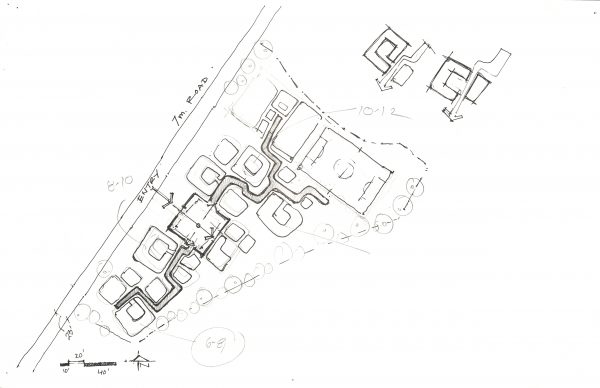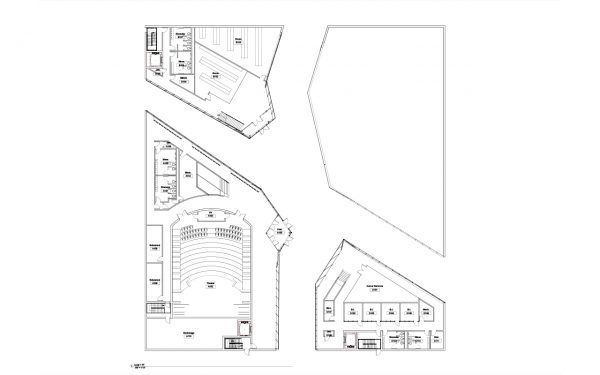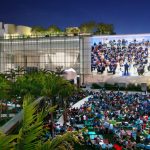






Architecture Flexibility: An Evolution Towards A More Flexible Architecture












Architecture Flexibility: An Evolution Towards A More Flexible Architecture

Architecture Flexibility: An Evolution Towards A More Flexible Architecture
How can architects redefine the way we design and construct buildings? Currently, buildings are too restrictive and do not allow for ease of flexibility and/or change. The main reasons for the inflexibility of current construction methods are columns and structural walls, they prevent us from rearranging the spaces as needed. When it comes time to modify and remodel buildings and spaces architects and designers are constrained; These constrains do not allow for the liberty of creating new designs and spaces where many people could use, since they are predetermined by the existing architecture. The way designers can fix that is by asking themselves how can architects, engineers, and designers design a flexible building approach that supports the evolving needs of tenants and clients, and how can flexible building systems impact and change the environment we live in?
Exploring the ways architecture has evolved, will help architects and designers better understand the way we live, how construction and design changes over time have improved our life-styles and how can we make them better. Through investigative research, design analysis, design, and manufacturing, architects can better understand how to design flexible buildings that will allow for changes to be made and permits accommodations for the future to come.
In this thesis we will explore a way to create buildings with a higher grade of flexibility, allowing for the adaptability of spaces depending on the users needs. This thesis will not only talk about flexibility in the sense of adaptability, but also in the sense of reusability, and sustainability to encompass the needs of the future within the architecture field. To allow for that to happen I have come up with The Five Rules Towards A More Flexible Architecture. (1. External Structure 2. Fully Open/Flexible Interiors 3. Flexible Systems 4. Reusability 5. Sustainable/Environmentally Friendly) These rules will be further explained later in this thesis.
AMS – East Riverside Library – Toledo, Ohio – Initial Concept
The initial concept presented revolves around the ideas present in the masterplan for the East Riverside. I looked at the new library program that was derived from my thesis, and then looked at how it needed to morph to adapt to the needs of the East Toledo community. Those changes are shown in the image comparing the new program. The program is broken up into 4 main programmatic segments. Civic, Book stacks, Technology, and Outreach. The program was implemented and designed into the form concept for all of the programmatic segments except for the Book stacks.
Next Steps:
Based on feedback at the presentation, I need to rework the floor plans to minimize circulation space and better the relationship between the 4 buildings.
AMS – Fall 2018 Work
The masterplan shown is part of the Green Artery Masterplan, a plan that was designed to facilitate a new library on the East Side of Toledo. The east side of Toledo, Ohio is populated by approximately 27,000 people and 10,000 households. Of those 10,000 households, 64% are families, and 37% have children. Unfortunately, with little to no opportunity for civic engagement in the area, individuals are not finishing school which has led to high gang participation and elevated crime rates. Only 20% of the population is obtaining any form of college education, and 43% aren’t even making it through high school. The goal of this masterplan is to not only facilitate the future library, but to provide opportunities within the community to help mitigate these aforementioned issues. Implementing a library at the heart of the east side that provides many assets the community currently needs will certainly be a catalyst for civic engagement for the area. The masterplan is composed of various park spaces, civic elements, re-population of the existing uptown area, and a connection to the surrounding neighborhoods through the Green Artery system.
2/22 – BGO Schematic Review
Center for Innovation
Schematic design stage. Review Friday 22, 2019.
For this stage in my project I focused on formal aspects of the shell of the proposed addition to Alumni hall. Programmatic studies determined that an additional 55k square feet would be needed. While the existing building would largely contain classrooms, faculty offices, and lecture rooms, the addition is meant to accommodate the large workroom spaces expected for interdisciplinary use. In addition to these spaces, a large portion of the addition would be designed as a multi-use auditorium space with its main focus as an Esports arena.
Following are precedent images, schematic drawings , and a navigable 3D schematic model.
Precedents
Schematic Drawings
3D model viewer

Schematic Design Review
JMP Schematic Design
Schematic Design Presentation
For this presentation I focused on a full schematic design floorplan layout of the hyperloop terminal building. This started with a look at the latest technology to be introduced to hyperloop, the Quintero One from Hyperloop Transportation Technologies (See image below). This capsule is much larger than the expected design I was working with and required a redesign of the station size from last semester.

Redesign Following the Release of Quintero One

After deciding the Enlarged Circular Design (bottom right on image above) was the best option in terms of efficiency and building options (Coming in at 30% higher than the next design in terms of capacity) I moved on to locating the building and creating a workable schematic design.
Building Location
This is situated in a location where the building will communicate with the Union Terminal. As my building is located on Ezzard Charles Way directly facing the union terminal it is essential that they communicate with one another.
 Schematic Design of Terminal Floorplans
Schematic Design of Terminal Floorplans





 Basic Building Section
Basic Building Section
This shows context with size and section of the Cincinnati Union Terminal.

Traffic Study
Due the building being intersected by Ezzard Charles Drive I did an intensive study on how would be the best way to combine the loading and unloading of a 24,000 person a day station with a main Cincinnati thoroughfare and a proposed street car extension.

Next Steps
Next steps will be looking into the building connections with the community. Finding ways to replace the housing that is taken away with this addition. Looking into how the Hyperloop exits the city and connects to its main track, and continuing to develop the exterior façade and schematic design drawings.
Creativity :: Design Thinking :: Brainstorming
What an opportunity (and treat) to have David Eyman, Creativity Instructor at the MU Farmer School of Business run a workshop and help hone our skills in one of those areas in which everyone and no one is an expert.


























